 W
WA carpet is a textile floor covering typically consisting of an upper layer of pile attached to a backing. The pile was traditionally made from wool, but since the 20th century, synthetic fibers such as polypropylene, nylon or polyester are often used, as these fibers are less expensive than wool. The pile usually consists of twisted tufts that are typically heat-treated to maintain their structure. The term carpet is often used in a similar context to the term rug, but rugs are typically considered to be smaller than a room and not attached to the floor.
 W
WAfter 1500, and following the expulsion of the Moors by King Ferdinand and Queen Isabella, Spanish carpet design began to prefer classically inspired European Renaissance styles to the middle eastern designs they had known.1Although the exact region to begin to produce the new style is not yet known, historians have attributed the move towards European design primarily to the Alcaraz in southern Castile.2 When executed by the Alcaraz designers, European Renaissance styles over-took the carpet field in the form of acanthus vinescrolls. On occasion, carpets motifs also included animal features within detailed design. 3 With the advance of European design, colors became more muted. 4 The shift in color palette was due to two main factors: the loss of the Moors saw the loss of master dyers and new dyes on the market were being experimented with. Popular color schemes of 16th century Alcaraz design include dark green on green and dark yellow on yellow.5
 W
WAn Arab carpet is an oriental carpet made in the Arab world using traditional Arab carpet-making techniques.
 W
WAn Arraiolos rug, Arraiolos tapestry, Arraiolos carpet or Portuguese needlework rug is an embroidered wool rug made traditionally in the small town of Arraiolos, Portugal, since the Middle Ages. They are inspired by Persian carpets.
 W
WAzerbaijan National Carpet Museum is a museum located in Baku that displays Azerbaijani carpets and rugs of various weaving techniques and materials from various periods. It has the largest collection of Azerbaijani carpets in the world. It moved to a new building on the Baku's seafront park during 2014 from its former location on Neftchiler Avenue.
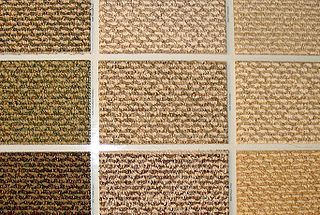 W
WBerber carpets are carpets hand-woven by the Berber people in North Africa and the Sahara. The carpets come in traditional and modern designs, which are distinguished by different knotting patterns, dyes and fabric textures.
 W
WBessarabian rugs and carpets are the commonly given name for rugs in pile and tapestry technique originating in Russian provinces as well as Ukraine and Moldova during the late 19th and early 20th centuries.1 Some scholars will classify flat-woven carpets as Bessarabian, while referring to knotted-pile carpets as Ukrainian.2 They are predominantly from an area corresponding to modern Bulgaria and Romania.3 Produced under late Ottoman rule, they stand right on the cusp of European and Oriental carpet weaving.
 W
WThe braided rug was a staple in early, Colonial American culture. Settlers used scraps of clothing and other excess materials to make a floor covering that would provide warmth and protection for a home's residents and guests.
 W
WCarpet cleaning is performed to remove stains, dirt, and allergens from carpets. Common methods include hot water extraction, dry-cleaning, and vacuuming.
 W
WThe outdoor carpet hanger is a construction to hang carpets for cleaning with the help of carpet beaters. It is known in Germany, Poland, Lithuania, the Czech Republic, Finland, Russia, and other countries.
 W
WA carpet stretcher is a specialized tool used to install wall-to-wall carpet. The tool grips the carpet with a set of tines on the head. A force applied to the tool then tensions the carpet and pulls it closer to the wall, where it can be fixed to a tack strip.
 W
WCaucasian rugs are primarily produced as village productions rather than city pieces. Made from materials particular to individual tribal provinces, the rugs of the Caucasus normally display bold geometric designs in primary colours. Styles typical to the Caucasus region are Daghestan, Shirvan, Gendje rugs, Kazakh and Quba rugs. Several carpet styles from contemporary northwestern Iran also fall largely into this bracket, such as the Ardabil rugs.
 W
WChiprovtsi kilims are handmade flatwoven kilim rugs with two identical sides, part of Bulgarian national heritage, traditions, arts and crafts and pertain to the Western Bulgarian kilim weaving tradition. Their name is derived from the town of Chiprovtsi where their production started in the 17th century.
 W
WAn Eagle rug, is a small rug, usually round, upon which Eastern Orthodox bishops stand during divine liturgy and other services.The Orlets ("Eaglet") is a small round or oval rug, whereon is represented an eagle, with a glory around his head, flying above a city. During divine service, the bishop stands on such rugs, as a reminder that he should, by his teaching and his life, rise above his flock, and be to them an example of a soul aspiring from the things of earth to those of heaven.
 W
WAnatolian animal carpets represent a special type of pile-woven carpet, woven in the geographical region of Anatolia during the Seljuq and early Ottoman period, corresponding to the 14th–16th century. Very few animal-style carpets still exist today, and most of them are in a fragmentary state. Animal carpets were frequently depicted by Western European painters of the 14th–16th century. By comparison of the few surviving carpets with their painted counterparts, these paintings helped to establish a timeline of their production, and support our knowledge about the early Turkish carpet.
 W
WThe Ersari carpet is a type of carpet handmade by the Ersari Turkmen of Turkmenistan and Uzbekistan.
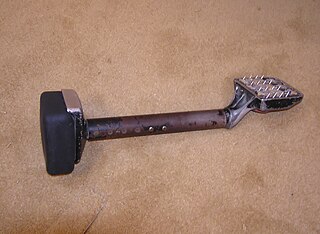 W
WFitted carpet, also wall-to-wall carpet or carpeting, is a carpet intended to cover a floor entirely. Carpet over 4 meters in length is usually installed with the use of a power-stretcher.
 W
WA flokati rug is a woven wool rug. They are shaggy in appearance, and are thick and soft. Modern wool or synthetic rugs may be purchased in a variety of colours.
 W
WA floorcloth, or floor-cloth, is a cloth, normally of flannel, used for cleaning floors. The term was previously used also for materials used in place of carpeting or to protect expensive carpets, such as oilcloth, Kamptulicon, linoleum or other materials. This use is considered somewhat antiquated today, though do-it-yourself decorators still use floorcloths as a customizable alternative to rugs. Some artists have elected to use floorcloths as a medium of expression. Most modern floorcloths are made of heavy, unstretched canvas with two or more coats of gesso. They are then painted and varnished to make them waterproof.
 W
WFlower carpet is a carpet made of flowers arranged in patterns. Flower carpet events happen in many places around the world. One of the most popular flower carpet events is the Flower Carpet biennial in Brussels. Flower carpets are made on the occasion of Onam festival in Kerala, India to welcome the legendary king, Mahabali. The Guinness World Record for the largest flower carpet of the world is for Jardines of Mexico, where an 18,000 m2 flower carpet was made on 8 December 2018.
 W
WHot Water Extraction (HWE) is a method of carpet cleaning. It involves a combination of hot water and cleaning agents being injected into the fibers of a carpet at high pressure and all lifted soil being removed by a powerful vacuum.
 W
WArifa Jan is an Indian activist for felt rug making in Srinagar in Kashmir. Jan was awarded the Nari Shakti Puraskar on 8 March 2020.
 W
WLatif Huseyn oglu Karimov was an Azerbaijani carpet designer known for his contributions to a variety of artistic fields, as well as for a number of books classifying and describing various designs of Azerbaijani rugs.
 W
WKhes is a thin cotton blanket cloth of the Indian subcontinent; it is a damask cloth used for blankets and winter wraps. Khes is generally hand-woven with coarse cotton yarns. Khes as a garment is a simple clothing item to wear loosely to cover upper body parts by men in Punjab, India, and Pakistan. Khes was an important cloth of Indian Punjab, and also produced in Punjab, Pakistan. The Punjab region was famous for the production of khes and many coarse cotton textiles produced in the 19th and 20th centuries. Khes is a comfort object used in bedding, and also usable as a cover.
 W
WAli Khodadadi was a carpet weaver and manufacturer from Iran, who was known for his work Boostan.
 W
WKnot density is a traditional measure for quality of handmade or knotted pile carpets. It refers to the number of knots, or knot count, per unit of surface area - typically either per square inch (kpsi) or per square centimeter (kpsc), but also per decimeter or meter. Number of knots per unit area is directly proportional to the quality of carpet. Density may vary from 25 to over 1000 kpsi, or 4 to over 155 kpsc, where ≤80 kpsi is poor quality, 120 to 330 kpsi medium to good, and ≥330 kpsi is very good quality. The inverse, knot ratio, is also used to compare characteristics. Knot density = warp×weft while knot ratio = warp/weft. For comparison: 100,000/square meter = 1,000/square decimeter = 65/square inch = 179/gereh.
 W
WA knotted-pile carpet is a carpet containing raised surfaces, or piles, from the cut off ends of knots woven between the warp and weft. The Ghiordes/Turkish knot and the Senneh/Persian knot, typical of Anatolian carpets and Persian carpets, are the two primary knots. A flat or tapestry woven carpet, without pile, is a kilim. A pile carpet is influenced by width and number of warp and weft, pile height, knots used, and knot density.
 W
WIn 1292, Marco Polo was the first to make mention of the Konya carpets in writing when he called them the most beautiful in the world. Konya carpets are named for the region in which they were made. Renamed from the Greek “Iconium” when the Seljuk Sultans of Rum made it their capital, Konya is one of the largest, oldest and continuously occupied cities in Asia Minor. When Polo wrote of the Konyas, he had probably seen them in manufactories that were attached to the Seljuk courts. In the early 20th century, large carpets were found in the Alaadin Mosque in Konya; they are now housed in the Museum of Turkish and Islamic Arts in Istanbul. Scholars and collectors alike, primarily for their bold tribal designs and magnificent color combinations not to mention their rarity, covet Konya rugs.
 W
WKurdish rugs are rugs woven by the Kurdish people in the Middle East, predominantly the larger Kurdistan region including the Eastern part of Turkey near the Taurus Mountains, Northern Iraq, southernmost Caucasus, Armenia and North-Western Iran. When referring to Kurdish rugs within the rug industry, one is referring to those made within Iranian Kurdistan.
 W
WArmenians wove Lilihans in Lilihan village in what used to be called Kamareh district in Iran. 1 The term Lilihan is better known in the US, in Europe it is not as widely used.2
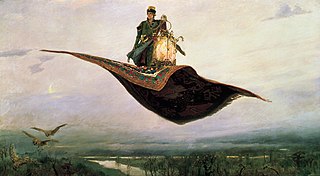 W
WA magic carpet, also called a flying carpet, is a legendary carpet and common trope in fantasy fiction. It is typically used as a form of transportation and can quickly or instantaneously carry its users to their destination.
 W
WMany studies have been conducted on Mamluk carpets, but scholars have not come to a consensus as to when or where they were made. Production of surviving Mamluk carpets started from the second half of the fifteenth century until the middle of the sixteenth century, and continued even after the Ottoman conquest of Egypt in 1517. The group of carpets produced in this period were initially called "Damascene" carpets after their attribution to Damascus, Syria. However, a Cairene origin was established after some fragments of carpets in this style were unearthed in Fustat. Furthermore, there are several eyewitness accounts by travelers placing a center of carpet production in Cairo.
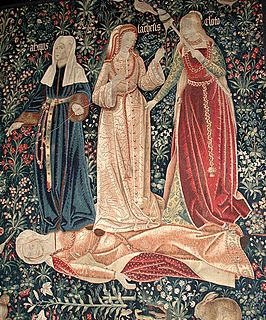 W
WMillefleur, millefleurs or mille-fleur refers to a background style of many different small flowers and plants, usually shown on a green ground, as though growing in grass. It is essentially restricted to European tapestry during the late Middle Ages and early Renaissance, from about 1400 to 1550, but mainly about 1480–1520. The style had a notable revival by Morris & Co. in 19th century England, being used on original tapestry designs, as well as illustrations from his Kelmscott Press publications. The millefleur style differs from many other styles of floral decoration, such as the arabesque, in that many different sorts of individual plants are shown, and there is no regular pattern. The plants fill the field without connecting or significantly overlapping. In that it also differs from the plant and floral decoration of Gothic page borders in illuminated manuscripts.
 W
WCarpets of Middle-Eastern origin, either from Anatolia, Persia, Armenia, Azerbaijan, the Levant, the Mamluk state of Egypt or Northern Africa, were used as decorative features in Western European paintings from the 14th century onwards. More depictions of Oriental carpets in Renaissance painting survive than actual carpets contemporary with these paintings. Few Middle-Eastern carpets produced before the 17th century remain, though the number of these known has increased in recent decades. Therefore, comparative art-historical research has from its onset in the late 19th century relied on carpets represented in datable European paintings.
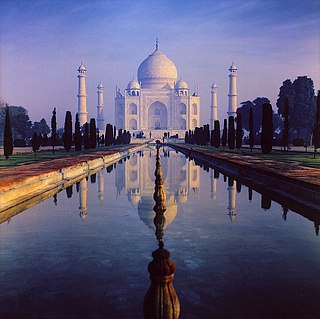 W
WAn oriental rug is a heavy textile made for a wide variety of utilitarian and symbolic purposes and produced in “Oriental countries” for home use, local sale, and export.
 W
WPelton Mill is a historic carpet mill located at Poughkeepsie, Dutchess County, New York. It was built about 1834 and rebuilt after the fire of 1854. It is a 4 1⁄2-story, three-bay brick building with a gable roof.
 W
WA prayer rug or prayer mat is a piece of fabric, sometimes a pile carpet, used by Muslims and some Christians during prayer.
 W
WA red carpet is traditionally used to mark the route taken by heads of state on ceremonial and formal occasions, and has in recent decades been extended to use by VIPs and celebrities at formal events.
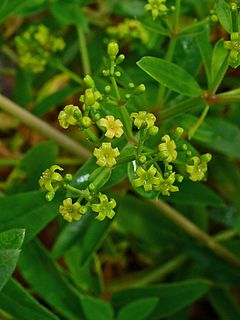 W
WRubia is a genus of flowering plants in the family Rubiaceae. It contains around 80 species of perennial scrambling or climbing herbs and subshrubs native to the Old World. The genus and its best-known species are commonly known as madder, e.g. Rubia tinctorum, Rubia peregrina, and Rubia cordifolia.
 W
WRug hooking is both an art and a craft where rugs are made by pulling loops of yarn or fabric through a stiff woven base such as burlap, linen, or rug warp. The loops are pulled through the backing material by using a crochet-type hook mounted in a handle for leverage. In contrast latch-hooking uses a hinged hook to form a knotted pile from short, pre-cut pieces of yarn.
 W
WA rug is a piece of cloth, similar to a carpet, but it does not span the width of a room and is not attached to the floor. It is generally used as a floor covering, or as a decorative feature. Rug making is the process of crafting a rug from various textile materials. Historically, there has been a variety of methods of rug making, including braiding, hooking, and weaving. These processes can be carried out by hand, using smaller tools like a latch hook, or using a weaving machine. Rag rugs are a historically notable and widespread form of hooked rug making. Rug hooking is both an art and a craft where rugs are made by pulling loops of yarn or fabric through a stiff woven base such as burlap, linen, or rug warp. The loops are pulled through the backing material by using a crochet-type hook mounted in a handle for leverage.
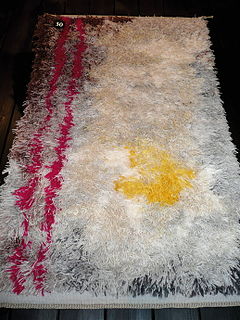 W
WA rya or rye is a traditional Scandinavian wool rug with a long pile of about 1 to 3 inches. They were made using a form of the Ghiordes knot to make the double-sided pile fabric. Though rya means "rug" in English, the original meaning in Sweden of rya was a bed cover with a knotted pile. The first ryas originated in the early fifteenth century as coarse, long-piled, heavy covers used by mariners instead of furs. As time progressed, the rugs have evolved to be lighter and more colorful. The insulation that ryas provide protect against the cold Scandinavian climate. Ryas are a knotted pile carpet, with each knot composed of three strands of wool, which enables the rug to exhibit rich texture from all the different shades of color. The name originates from a village in southwest Sweden. The term rya may also refer to a breed of sheep whose wool is used to make rya carpets.
 W
WA subtype of the Kuba rug, antique Seychour rugs are made in the small town of Yukhari-Zeykhur in Azerbaijan in the Northeast Caucasus. Prized for the detailed precision of their drawing and design as well as for their saturated colors, antique Seychour rugs popularly display designs such as cabbage rose and the Seychour cross. Differing from other Caucasian rugs, antique Seychour rugs do not share the same symmetry in their borders; they do however, share a similar flat-woven structure. In these particular rugs, one half of the knot is hidden.
 W
WA shag is a rug or carpet that has a deep pile, giving it a shaggy appearance."Definition of SHAG". Merriam-Webster. Retrieved 25 September 2016.</ref>
 W
WShusha Carpet Museum was founded by Vardan Astsatryan in 2011 in Shusha, Azerbaijan when it was under occupation of the unrecognised Republic of Artsakh.
 W
WThe Alexander Smith Carpet Mills Historic District is a national historic district located at Yonkers, Westchester County, New York. It includes 85 contributing buildings. It encompasses 19 stylistically varied mill buildings and six rows of workers' housing. They were developed between 1871 and 1930 in the vicinity of northeastern Getty Square along the banks of the Saw Mill River. The main mill building was originally built in 1871 and expanded between 1876 and 1883. It is a three-story, rectangular building, 52 bays wide and five bays deep in the Second Empire style. It features a four-story tower and a five-story tower. The workers' housing, known as Moquette Row, North and South, was built between 1881 and 1886. Many workers that lived in this housing originally were immigrants to the United States. They came from Scotland, Ireland, and Ukraine. The carpet works were developed by Alexander Smith (1818-1878) The company closed the Yonkers mills and relocated to Greenville, Mississippi, in 1954. At the time of its closing, there were 2,400 who worked at the carpet mill. At the time of World War II, there was 7,000 employees who worked at the mill.It was later absorbed into Mohawk Carpet, later Mohasco Corporation. The carpet weaving industry was revolutionized by looms invented in this plant by Alexander Smith and Halcyon Skinner. Skinner, an engineer, designed a loom known as the Axminster power loom, which revolutionized the production of carpets. A patent for this loom was created in 1877 and royalty rights were sold to European and American companies at the rate of twenty cents per yard of carpet produced.
 W
WSoumak is a tapestry technique of weaving sturdy, decorative fabrics used for rugs, domestic bags and bedding, with soumak fabrics used for bedding known as soumak mafrash.
 W
WA stair carpet is a linear carpet or rug, that runs up/down on interior staircases usually, and occasionally on exterior stairways.
 W
WCarpets and rugs have been handmade in Sweden for centuries, taking on many different forms and functions over the course of time. Rugs woven in the traditional Oriental manner, especially in the Ottoman Empire and points east, were originally brought to Sweden over trade routes as early as the early Middle Ages. In the centuries that followed, Swedish rug-makers often infused their works with themes and motifs traditionally found in Oriental rugs. Eventually, Swedish rug-makers would begin to use Oriental rug-making techniques, but themes and motifs more consistent with the artistic and cultural heritage of Sweden. By the early modern periods, rugs had long been an important avenue of art – especially folk art – in Swedish culture. By the beginning of the twentieth century, the craft was seen as being an important artistic and cultural practice throughout Sweden, and designers began to make rugs that had a broad international appeal. Swedish rugs from the mid-twentieth century remain among the most desirable and sought after in the rug world.
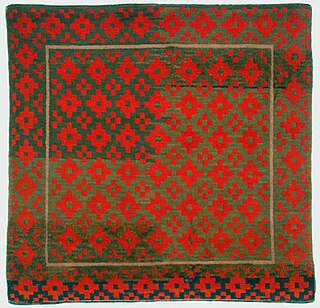 W
WTibetan rug making is an ancient, traditional craft. Tibetan rugs are traditionally made from Tibetan highland sheep's wool, called changpel. Tibetans use rugs for many purposes ranging from flooring to wall hanging to horse saddles, though the most common use is as a seating carpet. A typical sleeping carpet measuring around 3 ft × 5 ft is called a khaden.
 W
WA Turkmen rug is a type of handmade floor-covering textile traditionally originating in Central Asia. It is useful to distinguish between the original Turkmen tribal rugs and the rugs produced in large numbers for export mainly in Pakistan and Iran today. The original Turkmen rugs were produced by the Turkmen tribes who are the main ethnic group in Turkmenistan and are also found in Afghanistan and Iran. They are used for various purposes, including tent rugs, door hangings and bags of various sizes.
 W
WUzbek carpet is one of the best-known handmade carpets produced by Uzbeks. Carpet weaving, being one of the types of Uzbek arts and crafts, is inextricably linked with other kinds of Uzbek arts and crafts, continuing the tradition of other types of national fine art. Originally carpet in Uzbekistan is flourishing in such villages as Kamashi, Hadzhaki and Jeynov in Kashkadarya region.